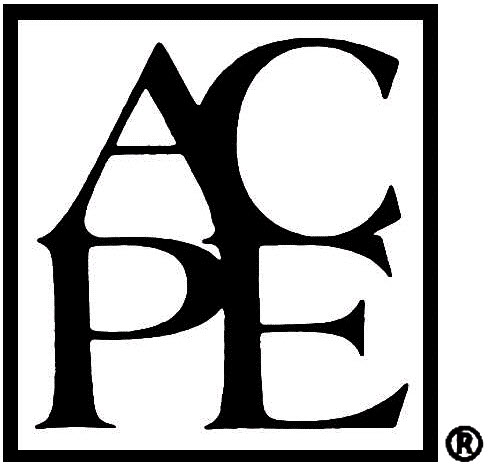Mitigating Implicit Bias in the Pharmacy Setting
Additional Topic Areas CE for Pharmacy Techs
Are you a Pharmacist? Check out the Pharmacist version of this course.
Course Summary
Health equity is an important concept in healthcare. It signifies a society where all members can receive quality healthcare; however, this goal has not been fully attained as health disparities are present in healthcare. Health disparities occur when there is an unequal delivery of healthcare services to patients of a specific race, ethnicity, gender, sexual orientation, or socioeconomic status. Moreover, health disparities may be due, in part, to a provider’s unconscious or implicit bias. Implicit biases are present in all areas of healthcare, including pharmacy settings. In order to confront and mitigate implicit bias, pharmacists and pharmacy staff must first understand how it can manifest in the pharmacy setting, and how it can affect clinical judgment and behavior, patient trust, and adherence to treatment plans. Once implicit bias is acknowledged, strategies can be developed to mitigate it.
Describe what implicit bias is and how it can manifest in healthcare
Describe how implicit bias can affect clinical judgment and behavior in healthcare settings
Identify strategies on how to mitigate implicit bias in the pharmacy setting
Course Syllabus
I. Introduction
II. Understanding Implicit Bias
1. Misunderstandings or Misconceptions about Implicit Bias
2. Microaggression as a Form of Implicit Bias
III. Healthcare Professionals have Implicit Biases
IV. Consequences of Implicit Bias
1. Implicit Bias and Clinical Judgments and Behaviors
2. Implicit Bias, Patient Trust, and Treatment Adherence
V. Assessing Implicit Bias
VI. Strategies for Mitigating Implicit Bias in the Pharmacy Setting
1. Increased Awareness
2. Controlling Automatic Responses
3. Creating an Inclusive Work and Learning Environment
4. Using Objective Decision-making
5. Seeking Feedback
6. Encouraging Open and Honest Communication
7. Monitoring and Evaluating Progress
VII. Long-lasting Mitigation of Implicit Bias
VIII. Summary
- Read the course objectives and faculty planner disclosure
- Read the course material
- Complete the post-test with a minimum score of 70% and complete the course evaluation form.
- Results are automatically submitted to CPE Monitor
Faculty Planner Disclosure
The following individuals were involved in the development of this activity: Steve Malen, PharmD, MBA, and Susan DePasquale, MSN, PMHNP-BC. There are no financial relationships relevant to this activity to report or disclose by any of the individuals involved in the development of this activity.
Unlabeled Use Disclosures
The information provided in this course is general in nature and it is solely designed to provide participants with continuing education credit(s). This course and materials are not meant to substitute for the independent, professional judgment of any participant regarding that participant’s professional practice, including but not limited to patient assessment, diagnosis, treatment and/or health management. Medical and pharmacy practices, rules, and laws vary from state to state, and this course does not cover the laws of each state; therefore, participants must consult the laws of their state as they relate to their professional practice. Healthcare professionals, including pharmacists and pharmacy technicians, must consult with their employer, healthcare facility, hospital, or other organization, for guidelines, protocols, and procedures they are to follow. The information provided in this course does not replace those guidelines, protocols, and procedures but is for academic purposes only, and this course’s limited purpose is for the completion of continuing education credits. Participants are advised and acknowledge that information related to medications, their administration, dosing, contraindications, adverse reactions, interactions, warnings, precautions, or accepted uses are constantly changing, and any person taking this course understands that such person must make an independent review of medication information prior to any patient assessment, diagnosis, treatment and/or health management. Any discussion of off-label use of any medication, device, or procedure is informational only and such uses are not endorsed hereby. Nothing contained in this course represents the opinions, views, judgments, or conclusions of RxCe.com LLC. RxCe.com LLC is not liable or responsible to any person for any inaccuracy, error, or omission with respect to this course, or course material.
Computer Hardware/Software Requirements
Please ensure the device you plan to use meets these requirements and specifications:
- Operating System: Windows 7,8,10, or 11 /Mac OS X 10.9 or later/iOS/Android
- Supported Browsers: Microsoft Edge, Firefox, Google Chrome, Safari, Opera
- A connection to the internet
- For Live Webinars or Conferences: GoToWebinar application for iOS, Android, Mac, or PC. You cannot 'call into' a live conference.
Rating: 4.33/5
Based on the ratings of 2250 customers
- Target Audience: Pharmacy Tech
- Secondary Audiences: This educational activity is also for other healthcare professionals, such as nurses, physicians, or others who may be part of a healthcare team and may be interested in this educational topic. A healthcare team approach to patient care may be discussed in this activity, as applicable. No state board or professional organization has evaluated this activity to determine whether it meets the continuing education requirements of nurses, physicians, or other professions not listed under the “Target Audience” described above. Always verify with individual employers or supervisors whether they will accept this educational activity upon completion.
- Contact Hours: 1.0 (0.1 CEUs)
- Activity Release Date: 1/28/2023}
- Activity Expiration Date: 1/28/2026}
- Activity Type: Knowledge
- UAN: 0669-0000-23-004-H99-T
- Topic: Additional Topic Areas
- CeBroker Number: 20-989876
Faculty:

RxCe.com, LLC is accredited by the Accreditation Council for Pharmacy Education as a provider of continuing pharmacy education.

RxCe.com, LLC, offers pharmacy technician continuing education courses for PTCB recertification. Pharmacy technician courses are indicated both in the Target Audience description and the ACPE UAN which will end with a "T".